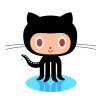各言語におけるポリモーフィズムの実装例
ポリモーフィズム(多態性)は、オブジェクト指向プログラミングにおける重要な概念の1つです。これは、異なるクラスのオブジェクトが、同じインターフェースを共有しながら、異なる動作を持つことを可能にします。本資料では、JavaやC#を含む主要なプログラミング言語におけるポリモーフィズムの実装方法を比較し、各言語の特徴と適用例を解説します。
ポリモーフィズムは、柔軟で再利用可能なコードを設計する上で欠かせない技術です。この資料が、ポリモーフィズムの理解を深め、さまざまな言語での活用に役立てば幸いです。
1. Java
Javaでは、抽象クラスやインターフェースを使用してポリモーフィズムを実現します。
abstract class Animal {
abstract void makeSound();
}
class Dog extends Animal {
void makeSound() {
System.out.println("Woof");
}
}
class Cat extends Animal {
void makeSound() {
System.out.println("Meow");
}
}
public class Main {
public static void main(String[] args) {
Animal animal = new Dog();
animal.makeSound(); // Woof
animal = new Cat();
animal.makeSound(); // Meow
}
}- 特徴:
abstractやinterfaceを使って共通のインターフェースを定義。- 実行時に適切なオーバーライドメソッドが呼び出される。
2. C#
C#でも、抽象クラスやインターフェースを使用してポリモーフィズムを実現します。
using System;
abstract class Animal
{
public abstract void MakeSound();
}
class Dog : Animal
{
public override void MakeSound()
{
Console.WriteLine("Woof");
}
}
class Cat : Animal
{
public override void MakeSound()
{
Console.WriteLine("Meow");
}
}
class Program
{
static void Main()
{
Animal animal = new Dog();
animal.MakeSound(); // Woof
animal = new Cat();
animal.MakeSound(); // Meow
}
}- 特徴:
- Javaと非常に似た構造。
virtualとoverrideキーワードを用いてメソッドのオーバーライドを明示。
3. Python
Pythonでは、抽象クラスを使用することもできますが、動的型付けのため、特にクラスの宣言を必要とせずポリモーフィズムを実現できます。
class Dog:
def make_sound(self):
print("Woof")
class Cat:
def make_sound(self):
print("Meow")
def animal_sound(animal):
animal.make_sound()
animal_sound(Dog()) # Woof
animal_sound(Cat()) # Meow- 特徴:
- 明示的な型指定を必要としない。
- クラスが同じメソッドを持っていればポリモーフィズムが自然に機能(ダックタイピング)。
4. C++
C++では、仮想関数(virtual)を使用してポリモーフィズムを実現します。
#include <iostream>
using namespace std;
class Animal {
public:
virtual void makeSound() = 0; // 純粋仮想関数
};
class Dog : public Animal {
public:
void makeSound() override {
cout << "Woof" << endl;
}
};
class Cat : public Animal {
public:
void makeSound() override {
cout << "Meow" << endl;
}
};
int main() {
Animal* animal = new Dog();
animal->makeSound(); // Woof
delete animal;
animal = new Cat();
animal->makeSound(); // Meow
delete animal;
return 0;
}- 特徴:
- 仮想関数とポインタを使用する。
overrideはC++11以降のキーワード。
5. JavaScript
JavaScriptでは、プロトタイプベースの継承を使用します。
class Animal {
makeSound() {
console.log("Some generic sound");
}
}
class Dog extends Animal {
makeSound() {
console.log("Woof");
}
}
class Cat extends Animal {
makeSound() {
console.log("Meow");
}
}
let animal = new Dog();
animal.makeSound(); // Woof
animal = new Cat();
animal.makeSound(); // Meow- 特徴:
- クラスベースの継承(ES6以降)により、他の言語と似た表現が可能。
- 動的な型付けのため、柔軟性が高い。
6. Swift
Swiftでは、プロトコルやクラスのオーバーライドを使用します。
class Animal {
func makeSound() {
print("Some generic sound")
}
}
class Dog: Animal {
override func makeSound() {
print("Woof")
}
}
class Cat: Animal {
override func makeSound() {
print("Meow")
}
}
var animal: Animal = Dog()
animal.makeSound() // Woof
animal = Cat()
animal.makeSound() // Meow- 特徴:
- 型安全、
overrideキーワードを使用。 - プロトコルを使用して柔軟性を持たせることも可能。
目次
比較表
| 言語 | ポリモーフィズムの特徴 |
|---|---|
| Java | 抽象クラスとインターフェースを使用。オーバーライドメソッドが実行時に呼び出される。 |
| C# | virtual/overrideで明示的に指定。Javaと似た構造だがより柔軟。 |
| Python | ダックタイピングで実現。型に依存しない柔軟な実装が可能。 |
| C++ | 仮想関数(virtual)を使用。ポインタを利用して動的ディスパッチを行う必要がある。 |
| JavaScript | クラスベース(ES6以降)やプロトタイプベースの継承でポリモーフィズムを実現。型に縛られない柔軟な設計。 |
| Swift | 型安全、overrideでメソッドのオーバーライドを明示。プロトコルを使うことでインターフェースの柔軟性を強化。 |
訪問数 26 回, 今日の訪問数 1回





ディスカッション
コメント一覧
まだ、コメントがありません